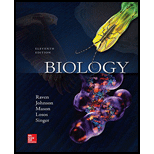
Concept explainers
Which of the following is NOT found in topsoil?
a. Humus
b. Bedrock
c. Bacteria
d. Air
Introduction:
The soil is an important part of the Earth. The soil layer of the Earth is called the pedosphere, which plays a vital role in Earth’s atmosphere. It provides medium for plant growth, water storage, and provides space for organisms to live. The soil composed of 50% solids that has minerals and organic matter, and other 50% pores are filled with water and gas.
Answer to Problem 1U
Correct answer:
The soil consists of humus, microorganisms including bacteria, and the pore space between the soil particles have air, however, the topsoil lack bedrock. Therefore, option b. is correct.
Explanation of Solution
Reason for the correct statement:
The soil is formed by the weathering of rocks and is the outermost layer of the crust of the Earth. It is comprised of rocks, sand, silt, clay, humus, and other organic matter. There are different layers of soil. The topsoil is the topmost layer of the soil. The topsoil is comprised of mineral particles, microorganisms, humus, sand, clay, silt, air, and water.
Option b. is given as "bedrock".
As “the bedrock is the innermost layer of the soil and is NOT found in the topsoil”, it is the right answer.
Hence, option b. is correct.
Reasons for the incorrect statements:
Option a. is given as “humus”.
The humus can be defined as the partially digested and decomposed organic matter. It is found in the topsoil. Therefore, it is a wrong answer.
Option c. is given as “bacteria”.
The topsoil consists of living organisms including bacteria, fungi, and other microorganisms. Therefore, it is a wrong answer.
Option d. is given as “air”.
The air in the topsoil is present in the pore space present between the particles of the soil. Therefore, it is a wrong answer.
Hence, options a., c., and d. are incorrect.
Conclusion:
The soil is formed by the weathering of rocks. It has several layers, the topmost of it is known as the topsoil. The topsoil is comprised of sand, silt, clay, air, humus, microorganisms and roots of the plants.
Want to see more full solutions like this?
Chapter 38 Solutions
Biology
- Draft a science fair project for a 11 year old based on the human body, specifically the liverarrow_forwardYou generate a transgenic mouse line with a lox-stop-lox sequence upstream of a dominant-negative Notch fused to GFP. Upon crossing this mouse with another mouse line expressing ectoderm-specific Cre, what would you expect for the phenotype of neuronal differentiation in the resulting embryos?arrow_forwardHair follicle formation is thought to result from a reaction-diffusion mechanism with Wnt and its antagonist Dkk1. How is Dkk1 regulated by Wnt? Describe specific cis-regulatory elements and the net effect on Dkk1 expression.arrow_forward
- Limetown S1E4 Transcript: E n 2025SP-BIO-111-PSNT1: Natu X Natural Selection in insects X + newconnect.mheducation.com/student/todo CA NATURAL SELECTION NATURAL SELECTION IN INSECTS (HARDY-WEINBERG LAW) INTRODUCTION LABORATORY SIMULATION A Lab Data Is this the correct allele frequency? Is this the correct genotype frequency? Is this the correct phenotype frequency? Total 1000 Phenotype Frequency Typica Carbonaria Allele Frequency 9 P 635 823 968 1118 1435 Color Initial Frequency Light 0.25 Dark 0.75 Frequency Gs 0.02 Allele Initial Allele Frequency Gs Allele Frequency d 0.50 0 D 0.50 0 Genotype Frequency Moths Genotype Color Moths Released Initial Frequency Frequency G5 Number of Moths Gs NC - Xarrow_forwardWhich of the following is not a sequence-specific DNA binding protein? 1. the catabolite-activated protein 2. the trp repressor protein 3. the flowering locus C protein 4. the flowering locus D protein 5. GAL4 6. all of the above are sequence-specific DNA binding proteinsarrow_forwardWhich of the following is not a DNA binding protein? 1. the lac repressor protein 2. the catabolite activated protein 3. the trp repressor protein 4. the flowering locus C protein 5. the flowering locus D protein 6. GAL4 7. all of the above are DNA binding proteinsarrow_forward
- What symbolic and cultural behaviors are evident in the archaeological record and associated with Neandertals and anatomically modern humans in Europe beginning around 35,000 yBP (during the Upper Paleolithic)?arrow_forwardDescribe three cranial and postcranial features of Neanderthals skeletons that are likely adaptation to the cold climates of Upper Pleistocene Europe and explain how they are adaptations to a cold climate.arrow_forwardBiology Questionarrow_forward
- ✓ Details Draw a protein that is embedded in a membrane (a transmembrane protein), label the lipid bilayer and the protein. Identify the areas of the lipid bilayer that are hydrophobic and hydrophilic. Draw a membrane with two transporters: a proton pump transporter that uses ATP to generate a proton gradient, and a second transporter that moves glucose by secondary active transport (cartoon-like is ok). It will be important to show protons moving in the correct direction, and that the transporter that is powered by secondary active transport is logically related to the proton pump.arrow_forwarddrawing chemical structure of ATP. please draw in and label whats asked. Thank you.arrow_forwardOutline the negative feedback loop that allows us to maintain a healthy water concentration in our blood. You may use diagram if you wisharrow_forward

 Biology: The Dynamic Science (MindTap Course List)BiologyISBN:9781305389892Author:Peter J. Russell, Paul E. Hertz, Beverly McMillanPublisher:Cengage Learning
Biology: The Dynamic Science (MindTap Course List)BiologyISBN:9781305389892Author:Peter J. Russell, Paul E. Hertz, Beverly McMillanPublisher:Cengage Learning Biology 2eBiologyISBN:9781947172517Author:Matthew Douglas, Jung Choi, Mary Ann ClarkPublisher:OpenStaxBasic Clinical Lab Competencies for Respiratory C...NursingISBN:9781285244662Author:WhitePublisher:Cengage
Biology 2eBiologyISBN:9781947172517Author:Matthew Douglas, Jung Choi, Mary Ann ClarkPublisher:OpenStaxBasic Clinical Lab Competencies for Respiratory C...NursingISBN:9781285244662Author:WhitePublisher:Cengage Biology: The Unity and Diversity of Life (MindTap...BiologyISBN:9781337408332Author:Cecie Starr, Ralph Taggart, Christine Evers, Lisa StarrPublisher:Cengage Learning
Biology: The Unity and Diversity of Life (MindTap...BiologyISBN:9781337408332Author:Cecie Starr, Ralph Taggart, Christine Evers, Lisa StarrPublisher:Cengage Learning





